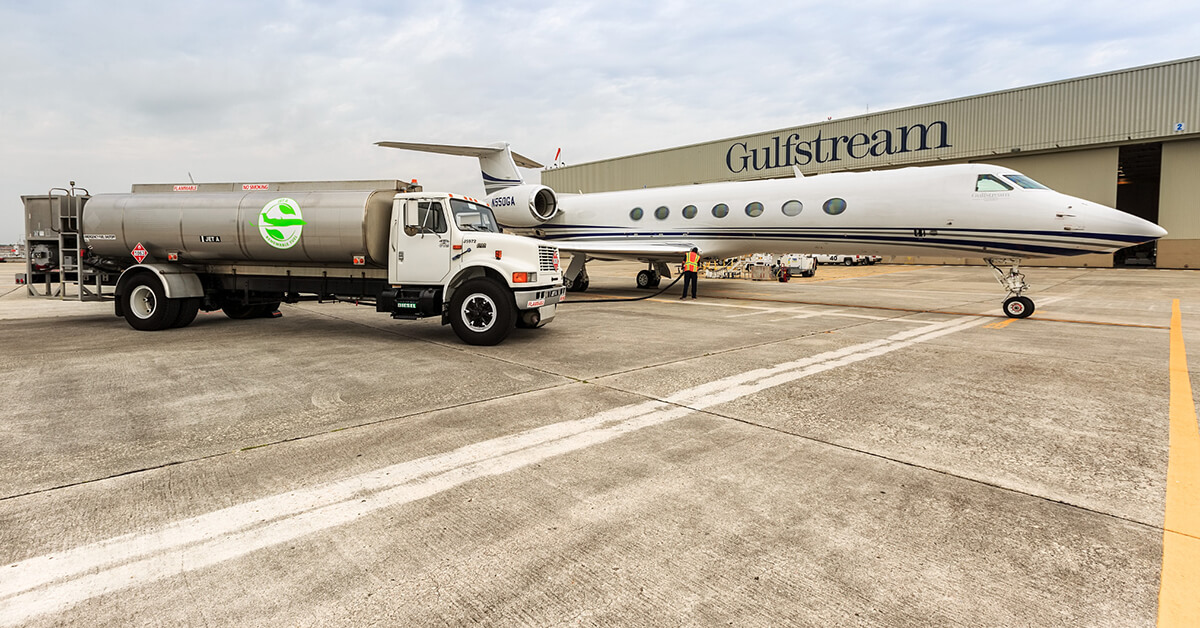
July 14, 2020
The business aviation industry continues to play a leading role in the adoption of sustainable aviation fuel (SAF), a drop-in replacement for petroleum-based fuels that’s become a vital part of efforts to reduce aviation’s worldwide carbon footprint.
“Business aviation accounts for 1.6 billion gallons of SAF [each year] – over 5% of the total domestic market pull,” said Chris Tindal, assistant director at the Commercial Aviation Alternative Fuels Initiative. “This speaks very highly of the industry.”
The emergence of SAF results from several key factors detailed in the NBAA GO Virtual Maintenance Conference session, “Sustainable Aviation Fuels – A Maintenance Perspective,” which offered a comprehensive overview of this exciting technology and its immediate applications for business aircraft operators.
A critical factor for operators is that SAF performs at the exact industry standard as traditional jet fuel. Each batch must undergo a rigorous 22-test certification analysis before hitting the market, ensuring it meets the ASTM D1655 Standard Specification for Aviation Turbine Fuel once blended (up to a 50/50 mix) with petroleum-based fuels.
This “very robust” certification process is why Charles Etter, staff scientist/technical fellow with Gulfstream Aerospace Company, said his company has experienced no issues while using more than 900,000 gallons of 30/70 blended fuel over the course of 700 flights and 1.2 million nautical miles.
“We’ve been operating using SAF on a consistent basis since 2016 and have seen no changes to aircraft or maintenance practices,” said Etter. “I like to say that it’s not ‘like’ Jet-A, it is Jet-A and operators should treat it the same.”
Another major factor is the proven environmental benefits that can help business aircraft users meet challenges from international emission standards to corporate sustainability metrics.
While Tindal noted that in-flight emissions have been tested to be lower with SAF blends, the main benefit – a 60-80% reduction in lifetime CO2 emissions – comes from the manufacturing process. Whereas petroleum-based fuels pull carbon from the ground and release it into the air, SAF acquires most of its carbon from elements already present within the atmosphere.
“It’s a closed loop,” said Keith Sawyer, manager of alternative fuels with AvFuel. “At no point do you see significant release of CO2 into the atmosphere throughout the life cycle of producing the product.”
Perhaps the most meaningful factor is the substantial projected increase in production capacity – expected to grow within the United States by more than 300 million annual gallons by 2023, which will help lower prices across the country.
Etter noted that there are a number of facilities being built across the nation in places such as Georgia, New Orleans, Oregon, Nevada and Minnesota, as well as massive expansions of existing facilities, such as a projected increase from 40 million annual gallons to 300 million annual gallons at one California facility.
As production capacity ramps up, there are immediate steps operators can take that will help clear the runway for SAF to continue its growth.
“Just something as simple as asking your FBO about when SAF will be available in your area will show a signal of demand,” said Etter.
Sawyer also suggested that stakeholders focus on the regulatory and legislative arena, including joining efforts to balance the tax environment for SAF with other biofuels through incentives such as blended tax credits.
Those interested in learning more about SAF can also request a recorded copy of the live Q&A, during which the panelists addressed questions about carbon offset programs, international mandates, and more.
Learn more about the industry’s efforts to promote the use of SAF.


 International Business Aviation Council Ltd.
International Business Aviation Council Ltd.